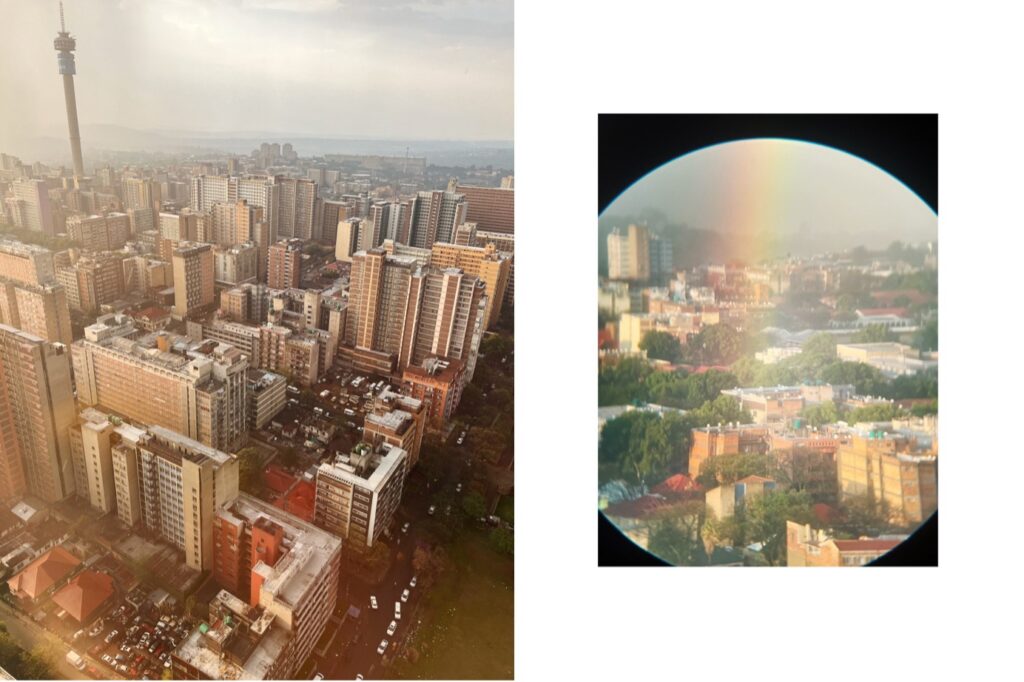To reverse the legacy of mining?

Image Credit: View from Ergo Brakpan Tailings Storage Facility © Saara Mildeberg 2023
The final site visit of the “Post-extractivist legacies and landscapes” project takes us to South Africa, an overwhelming multi-sensory experience for me, both as a (critical) tourist and as an anthropologist, but at times unexpected even for the curators of our four-day programme. We have been traversing different sites — bogs, peat fields and lead, zinc and silver mines of Ireland, oil shale landscapes of Estonia, and the gold mines of South Africa — following common keywords associated with post-extractivism. But the further we go, the more of an illusion this afterlife seems to be. Let me illustrate this with an ethnographic vignette.

“Most towns are built on water, but Joburg is built on gold.” This is the first thing we learn. Then we learn about the gated communities, recycle lanes, load shedding (a flicker in the restaurant, a minute of silence in the ivory tower where we discuss our case studies) … The Ponte skyscraper becomes a landmark of hope thanks to the Dlala Nje foundation that runs a community centre on its fifth floor. From the 50th floor, we spot a rainbow and go embark on a journey to find the pot of gold at its end.
An extended system of pipes leads us to the headquarters of ERGO Gold, where a clean, economically feasible and environmentally sustainable picture is painted of contemporary mining techniques.

This corporate mining creates a strong contrast with the zama-zamas (Makhetha, 2023; We Are Zama Zama, 2021) whom we spotted earlier, illegal miners trying their luck in the wasteland. How exiting, exotic, authentic! This mood in our car doesn’t change even when we learn that they might be carrying weapons (only our local driver seems uncomfortable.)


The trip culminates on top of the Rooikraal reclamation site. A robotic water cannon cuts the ground like butter and sends it down into the processing plant, where gold is extracted. Hydraulic reclamation of a third generation goldmine — it seems our ideas of post-extractivism will have to wait here for a while.

– SAARA MILDEBERG, Tallinn University
References
Makheta, E. “‘Zama Zama’ and Leftovers: The Recycling of Ore in Abandoned Gold Mines in South Africa.” The Extractive Industries and Society, vol. 14, 2023. https://doi.org/10.1016/j.exis.2023.101272.
We Are Zama Zama. Directed by Rosalind Morris, including individuals’ stories from Rogers ‘Bhekani’ Mumpande, Sarah Muchimba, Darren Munenge, Prosper Ncube, Fanie Magwaza. Rocam Productions, 2021.